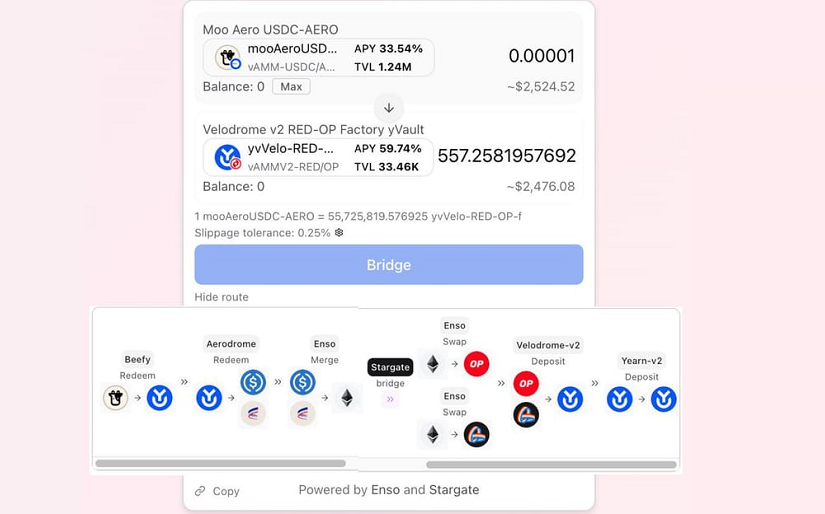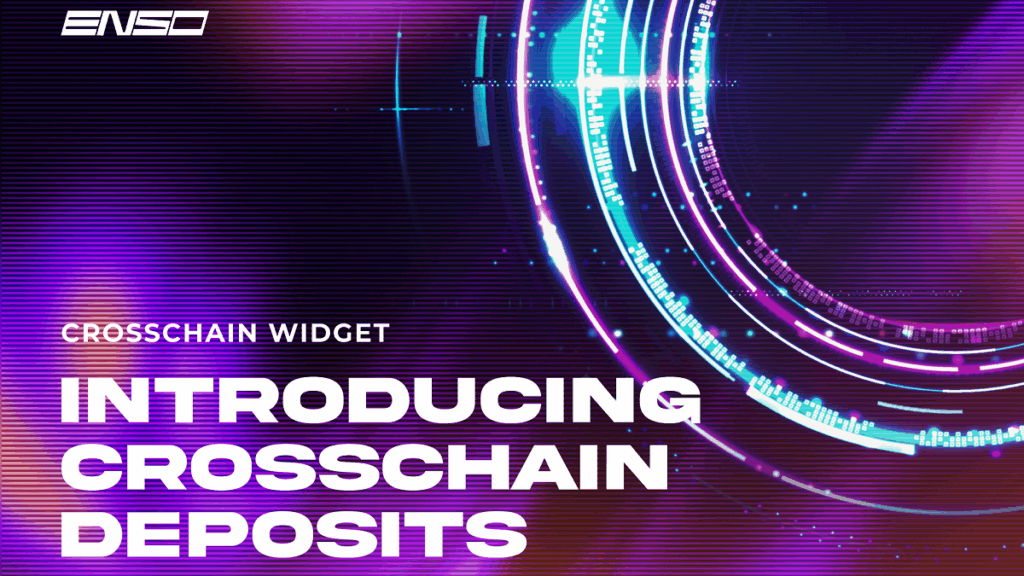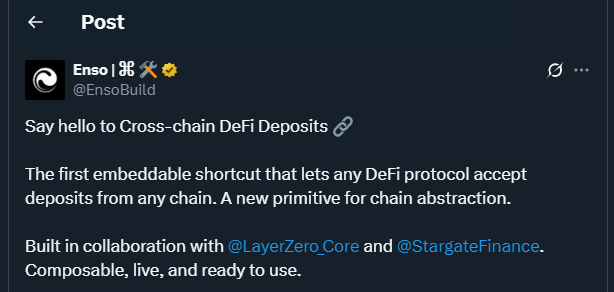TL;DR
- Enso Network introduces an embeddable widget enabling seamless cross-chain DeFi deposits with a single transaction.
- Built with Stargate and LayerZero, it abstracts bridging, swapping, and vault entry logic.
- This tool dramatically reduces friction for developers and users, and is already integrated in live DeFi protocols, marking a shift toward truly composable, user-friendly Web3 applications and broader adoption across multi-chain ecosystems worldwide.
The complexity of bridging assets and entering DeFi positions across chains has long been a pain point in Web3. Enso Network’s latest release directly addresses this challenge with its new Cross-chain Route Widget, an embeddable component that allows any DeFi protocol to accept deposits from multiple chains, without requiring custom infrastructure or compromising UX.
Users can now select a token on one chain and deposit into a vault or staking position on another, all in one fluid process. What previously required up to six manual steps, bridging, swapping, approving, locating vaults—is now handled behind the scenes. The flow compresses bridging and execution into a single route, signed and confirmed in one transaction.
Streamlining Multi-Chain DeFi Through a Single Interface
The widget uses Enso’s Route API to compute optimal paths for asset flow. It combines swap aggregators, LayerZero-powered bridging via Stargate, and smart contract execution into one bundled transaction. This minimizes failure points and latency while giving protocols full control over supported chains, tokens, and output destinations.
Developers can embed the widget with just a few lines of code. It can be tailored to fit specific vaults, LP positions, or staking contracts, letting builders keep their frontend lean while delivering an advanced cross-chain experience. For users, it’s a drastic UX improvement, fewer clicks, no need to hold gas on multiple chains, and a clear preview of the full route before signing.
A Flexible Tool Designed for Real DeFi Use Cases
Already live in multiple DeFi applications, the widget supports use cases ranging from yield strategies to staking flows. For example, a user can bridge USDC from Base, convert it into DAI on Plume, and deposit into a vault, all within one seamless process.

Execution is trust-minimized. If any step fails, the system reverts the transaction and returns funds. This adds reliability without sacrificing the permissionless ethos of DeFi.
By removing the usual cross-chain friction, Enso is helping protocols grow more interoperable and users access opportunities wherever they exist, not just on their native chain. This marks a real-world step toward the composability Web3 originally promised, and empowers a new generation of DeFi experiences with unmatched ease.











